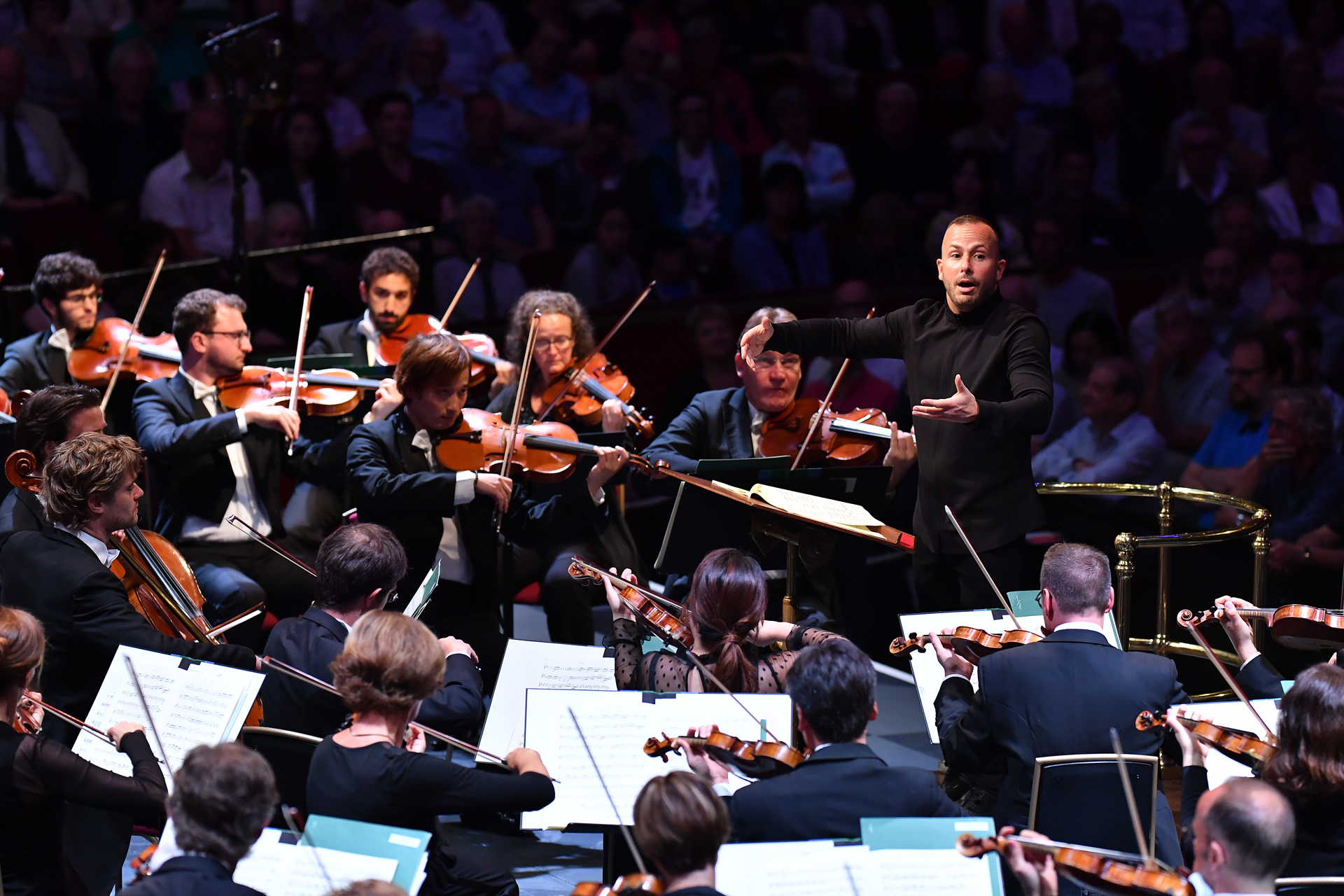Prom 15: Bavarian RSO, Nézet-Séguin review - perfect Beethoven, nuanced Shostakovich | reviews, news & interviews
Prom 15: Bavarian RSO, Nézet-Séguin review - perfect Beethoven, nuanced Shostakovich
Prom 15: Bavarian RSO, Nézet-Séguin review - perfect Beethoven, nuanced Shostakovich
A top partnership hits the heights of engagement and sophistication
While we wish the great Mariss Jansons a speedy recovery, no-one of sound heart and soul could be disappointed by his substitute for the two Bavarian Radio Symphony Orchestra Proms, Yannick Nézet-Séguin, whose supreme art is to show the score's construction in the face, with gestures to match.
What, though, was not to like about the Beethoven? It's such a charmer, but it still needs careful handling, and hours of rehearsal time with the BRSO, unquestionably one of the world's top five among orchestras as Nézet-Séguin is among conductors, must have been spent on split-second changes of light - the way, for instance we seem to have gone back to a recap of the second theme, in the first-movement development, when it suddenly cuts away to a question from the two flutes. From Mozartian charm to Beethoven on proto-Eroica charge was allowed, but within strict bounds. The scherzo had exactly the right lightness in emphasis; the finale was energetic without a hint of bludgeoning, down to the careful judging of the very last chord. 
All the more appalling, then, that the faux triumph at the end of the finale has to sweep that all away. Maybe I’m just beyond interest as to whether it’s threatening or celebratory, but this gilded spaciousness seemed like a perfunctory grandeur. So much the worse that instead of a stunned, brief silence, the bravos and the standing ovation followed so immediately. It took the pure, misty waters of the Moscow river at dawn in the Prelude to Musorgsky’s Khovanshchina to wash out the bad taste; an inspired encore on Nézet-Séguin's part, especially since it appeared – I’m assuming, with the last-minute appearance of the celesta a giveaway – in Shostakovich’s glowing orchestration.
rating
Share this article
The future of Arts Journalism
You can stop theartsdesk.com closing!
We urgently need financing to survive. Our fundraising drive has thus far raised £49,000 but we need to reach £100,000 or we will be forced to close. Please contribute here: https://gofund.me/c3f6033d
And if you can forward this information to anyone who might assist, we’d be grateful.

Subscribe to theartsdesk.com
Thank you for continuing to read our work on theartsdesk.com. For unlimited access to every article in its entirety, including our archive of more than 15,000 pieces, we're asking for £5 per month or £40 per year. We feel it's a very good deal, and hope you do too.
To take a subscription now simply click here.
And if you're looking for that extra gift for a friend or family member, why not treat them to a theartsdesk.com gift subscription?
more Classical music
 Kempf, Brno Philharmonic, Davies, Bridgewater Hall, Manchester review - European tradition meets American jazz
Bouncing Czechs enjoy their Gershwin and Brubeck alongside Janáček and Dvořák
Kempf, Brno Philharmonic, Davies, Bridgewater Hall, Manchester review - European tradition meets American jazz
Bouncing Czechs enjoy their Gershwin and Brubeck alongside Janáček and Dvořák
 Solomon, OAE, Butt, QEH review - daft Biblical whitewashing with great choruses
Even a top soprano and mezzo can’t make this Handel paean wholly convincing
Solomon, OAE, Butt, QEH review - daft Biblical whitewashing with great choruses
Even a top soprano and mezzo can’t make this Handel paean wholly convincing
 Two-Piano Gala, Kings Place review - shining constellations
London Piano Festival curators and illustrious friends entertain and enlighten
Two-Piano Gala, Kings Place review - shining constellations
London Piano Festival curators and illustrious friends entertain and enlighten
 Echo Vocal Ensemble, Latto, Union Chapel review - eclectic choral programme garlanded with dance
Beautiful singing at the heart of an imaginative and stylistically varied concert
Echo Vocal Ensemble, Latto, Union Chapel review - eclectic choral programme garlanded with dance
Beautiful singing at the heart of an imaginative and stylistically varied concert
 Scott, Irish Baroque Orchestra, Whelan, RIAM, Dublin review - towards a Mozart masterpiece
Characteristic joy and enlightenment from this team, but a valveless horn brings problems
Scott, Irish Baroque Orchestra, Whelan, RIAM, Dublin review - towards a Mozart masterpiece
Characteristic joy and enlightenment from this team, but a valveless horn brings problems
 Classical CDs: Voice flutes, flugelhorns and froth
Baroque sonatas, English orchestral music and an emotionally-charged vocal recital
Classical CDs: Voice flutes, flugelhorns and froth
Baroque sonatas, English orchestral music and an emotionally-charged vocal recital
 Kanneh-Mason, Britten Sinfonia, Shave, Milton Court - a grin and a big beaming smile
A pair of striking contemporary pieces alongside two old favourites
Kanneh-Mason, Britten Sinfonia, Shave, Milton Court - a grin and a big beaming smile
A pair of striking contemporary pieces alongside two old favourites
 theartsdesk at the New Ross Piano Festival - Finghin Collins’ musical rainbow
From revelatory Bach played with astounding maturity by a 22 year old to four-hand jazz
theartsdesk at the New Ross Piano Festival - Finghin Collins’ musical rainbow
From revelatory Bach played with astounding maturity by a 22 year old to four-hand jazz
 First Person: Manchester Camerata's Head of Artistic Planning Clara Marshall Cawley on questioning the status quo
Five days of free events with all sorts of audiences around Manchester starts tomorrow
First Person: Manchester Camerata's Head of Artistic Planning Clara Marshall Cawley on questioning the status quo
Five days of free events with all sorts of audiences around Manchester starts tomorrow
 Goldscheider, Brother Tree Sound, Kings Place review - music of hope from a young composer
Unusual combination of horn, strings and electronics makes for some intriguing listening
Goldscheider, Brother Tree Sound, Kings Place review - music of hope from a young composer
Unusual combination of horn, strings and electronics makes for some intriguing listening

Add comment